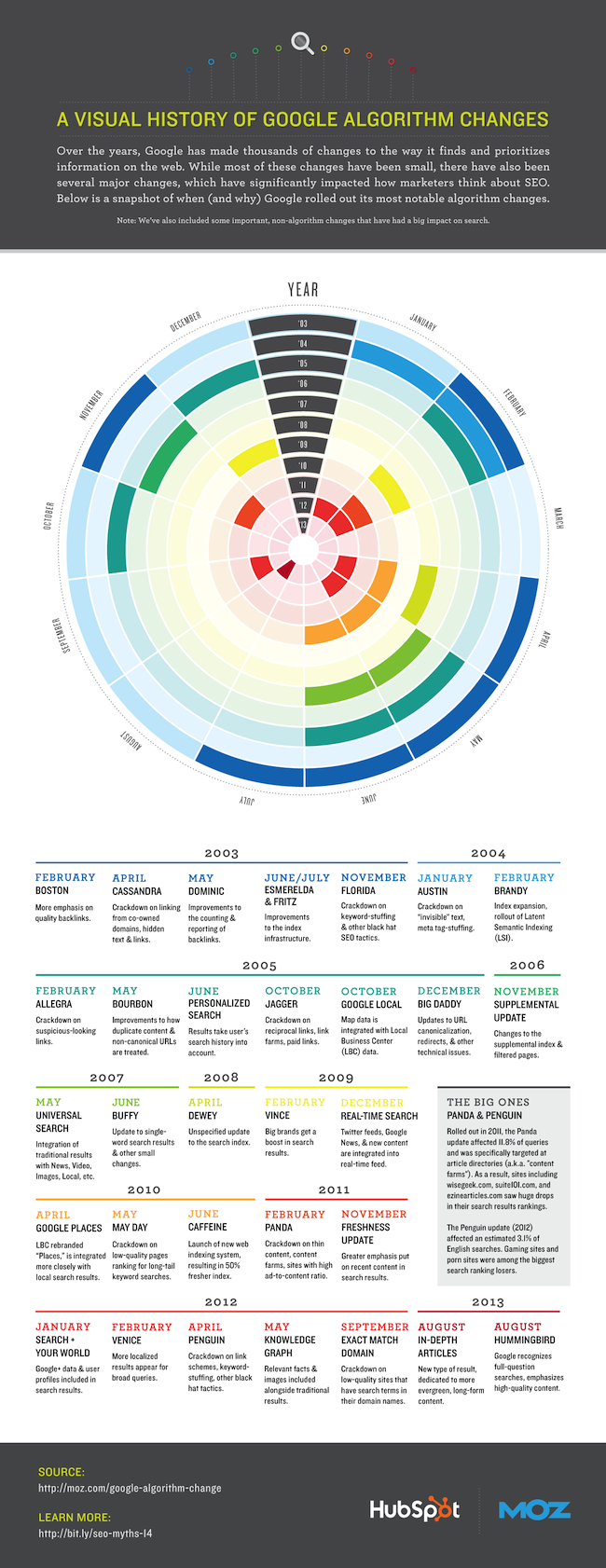Posted by Melanie Taljaard ● Wed, May 07, 2014 @ 16:05 PM
Understanding Google's Algorithm
In a typical search engine query, there are thousands, even millions, of web pages containing helpful information. The algorithms that provide these results are the computer formulas and processes that takes users’ questions and converts them into answers. Today's Google algorithms depend on over 200 unique signals or clues that allow it to guess what users are searching for. These signals
A September 2012 presentation from the Google Engage Conference in Vancouver showed that 4.8 billion Canadian Google searches are performed each month alone.
In the beginning
The earliest days of Google weren't that long ago either, only stemming back to the late 1990s to 2000s. Google and its search engine counterparts mainly worked as machines that matched keywords and counted links. Back then, a website could receive a high ranking by a simple Google and SEO two-step process that went like this:
- Include keywords or keyword phrases into every web page or website as many times as possible
- Get as many inbound links as humanly possible
The beat goes on
However, the "fun" wouldn't last as Google discovered weaknesses that required attention, and when addressed would provide higher quality results for its users. In 2003, the search engine began introducing various changes to its algorithms, some quite minor, but others with major changes. With the past earthshaking algorithms like Panda and Penguin, Google was responsible for considerable crackdowns in practices such as keyword stuffing, content farms, thin content, high ad-to-content ratios, and numerous other black hat tactics. These algorithms also had a direct effect on greatly reducing search engine rankings for article directories, and gaming and porn websites.
The next step
Then, with the February 2013 introduction of the highly overhauled "Hummingbird" algorithm, Google and SEO practices have provided users with dramatically increased. Google began to recognize full question queries with high emphasis on quality content. Hummingbird is thought to have affected around 90 percent of all queries, not to mention change how Google processes its user requests. It does still maintain the traditional factors like PageRank but includes more complex methods to reach its results.
For example, someone may search for "Where can you buy vintage Michael Jordan sneakers?" The updated Hummingbird algorithm will present the user with results that direct them to e-commerce sites that carry the sneakers, shops that carry vintage sporting goods, or other places that would carry the item. The search engine should hopefully understand the query and provide the various results rather than the previous keywords of only "buy sneakers."
The infographic below provides the full Google algorithm changes history:

Mobile searches
Among the new improvements in Hummingbird is the mobile search. According to the Vancouver Google conference, it was shown that mobile searches have local Canadian attention. Smartphone usage is growing based on the proximity of the searcher to e-commerce places. For example, overall Canadian usage shows that:
- 60-70 percent of Canadians are on mobile
- 80 percent are on a smartphone
- 83 percent use mobile on the go
- 72 percent use mobile in restaurants
- 77 percent use mobile in stores
- 86 percent of smartphone users notice mobile ads
How does this relate to marketing?
The latest Google algorithm also strongly encourages:
- keeping a close eye on link profiles
- maintaing good content strategies through regular, helpful content targeted at the targeted audience
- staying active on social media related to one's industry
As today's businesses move into the latest Google algorithm, the most successful ones will gather their Google and SEO data by providing their audiences with pure information as well as differentiating their products or services from their competitors. This in turn will give consumers greater choices.
While it is important to design and write websites for Google. It is still most important to write your website for your customers. Your website is mostly likely going to be a prospects first interaction with your company.
Is your website as hard working as you are? If you think your website could be doing more for you consider a strategic Inbound Marketing program to convert more site visitors to paying customers, learn more here...
Topics: selling online, marketing roi, evaluating marketing, inbound marketing, website marketing, online marketing, search engine marketing, hubspot, lead generation



